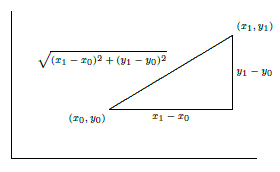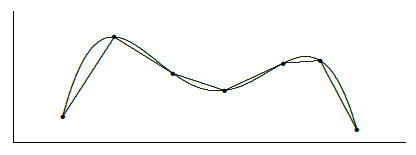9.9: Arc Length
( \newcommand{\kernel}{\mathrm{null}\,}\)
Here is another geometric application of the integral: find the length of a portion of a curve. As usual, we need to think about how we might approximate the length, and turn the approximation into an integral.
We already know how to compute one simple arc length, that of a line segment. If the endpoints are

Now if the graph of

Now we need to write a formula for the sum of the lengths of the line segments, in a form that we know becomes an integral in the limit. So we suppose we have divided the interval
The arc length is then
Note that the sum looks a bit different than others we have encountered, because the approximation contains a
To summarize, to compute the length of a curve on the interval
Unfortunately, integrals of this form are typically difficult or impossible to compute exactly, because usually none of our methods for finding antiderivatives will work. In practice this means that the integral will usually have to be approximated.
Let
Solution
The derivative
Using a trigonometric substitution, we find the antiderivative, namely
This is not difficult, and has value


